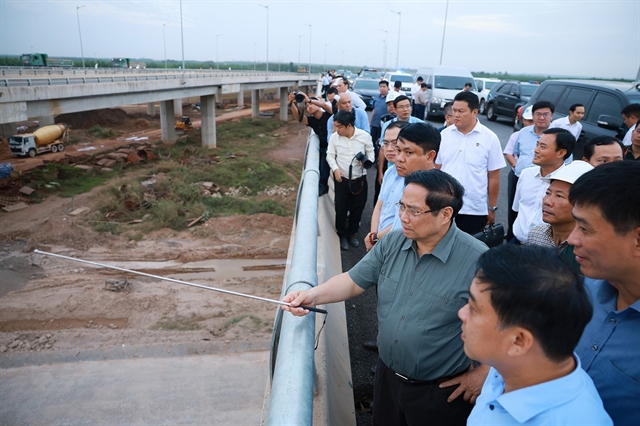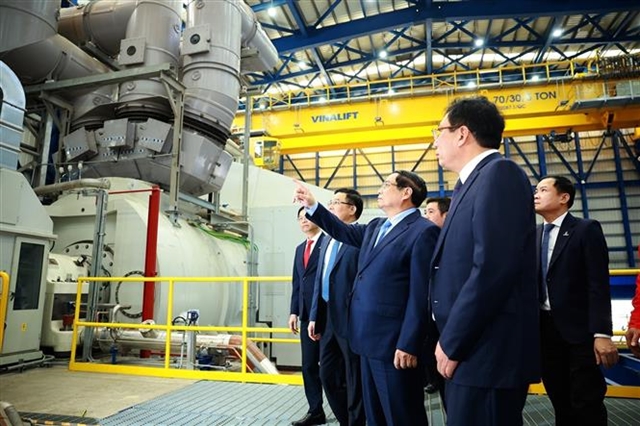 Society
Society


|
| Construction work on the Mỹ Thuận 2 Bridge. — VNA/VNS Photo Huy Hùng |
HÀ NỘI — The expressway from HCM City to Cần Thơ City, which is more than 160km long, will be connected and shorten travel time to just over two hours instead of the current nearly four hours.
The target can be reached when the two projects including Mỹ Thuận-Cần Thơ Expressway and Mỹ Thuận 2 Bridge are completed by the end of this year.
The Ministry of Transport (MoT) has requested investors and construction contractors to urgently speed up the projects’ progress.
A report of the Transport Construction Investment Management Authority (TCIMA) under the MoT shows that the Mỹ Thuận 2 Bridge project is 6.01km in length.
The main bridge is about 1.9km long, has six lanes and a designed speed of 80km per hour.
The road leading to the bridge is 4.7km long, including 4.3km long on the Tiền Giang Province side and 0.4km long on the Vĩnh Long Province side.
The project has a total investment of more than VNĐ5 trillion (US$206.8 million). It started in March 2020 and is scheduled to be completed next month.
The road sections are now completed, whereas the main section of the bridge was finished in the middle of last month.
The MoT requested the investor to direct contractors to concentrate all resources and organise construction all days to ensure the schedule, said a spokesperson from the TCIMA.
The Mỹ Thuận-Cần Thơ Expressway project has a total length of nearly 23km.
The expressway has four lanes and its roadbed width is 17m.
Its total investment is more than VNĐ4.8 trillion ($198.3 million).
The project started in January 2021.
Up to now, construction output has reached 76 per cent of the scheduled progress.
The bridge has been basically completed, and the asphalt work has been done for more than 8km.
In the context of frequent traffic jams during holidays and Lunar New Year, the MoT’s leaders confirmed that the earlier the projects opened for public use, the more effectively they would serve the society.
The projects will not only solve people's travel needs and limit traffic accidents, but also meet cargo transport capacity, contributing to socio-economic development. — VNS




